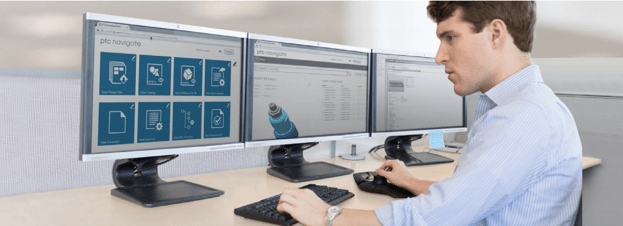
In 2012, a report by IDC suggested that organisations were only using 0.5% of the data they produced. Alone, that’s a worrying statistic, but combine it with a 2013 finding that 90% of the world’s data had been created in the previous two years, and there’s clearly a rather large hole down which business metrics are falling.
The issue doesn’t relate to the quality of data, but the sheer volume of it. Clearly, businesses lack the means to use it all.
Data can arrive from numerous sources - be it the product development team, marketing output or via customer feedback. To compound the issue, it also arrives in a variety of forms and from systems that have no dependency on, or connection with, one another.
Put simply, it’s a deafening, digital stream of constant white noise, and can be completely unapproachable, as a result.
In this post, we’re going to consider how businesses can tame the din, cut through the noise and make access to product lifecycle management (PLM) data as simple and beneficial as it should be.
Accept the importance of Big Data
‘Big Data’ isn’t simply a marketing ploy used by system providers - it’s a tangible element of the digital marketplace, and will benefit businesses of all sizes.
In order to make sense of Big Data, businesses must first learn to accept it.
This is tricky, because the sheer amount of data now available to the modern enterprise can easily be dismissed as nothing more than a distraction. However, when viewed as the goldmine of customer and product insight it represents, Big Data can - and should - rise to greater prominence within any business.
The role of IoT
The Internet of Things (IoT) has ushered in an age of connected machinery that offers product development insight like never before.
By embedding internet connectivity into every day devices, modern products are capable of sending back live, accurate, real-world usage data once they are sent out into the wild. In the past, such feedback would only have been accessible via costly surveys and focus groups - again, resulting in data that is as hard to digest as it is cumbersome.
With product feedback automated, this easy access to PLM data is a real boon for manufacturers. Satisfaction levels can be quickly analysed and opportunities for further iterations and improvements acted upon.
The system of record
The teams that reside within manufacturing businesses all serve different functions and, as a result, often rely on different systems that relate to the unique parts they play in the organisation. This works fine for each individual team, but results in a headache when it comes to cross-company data analysis.
It’s for this reason the that ‘system of record’ has gained the attention of manufacturing firms. This centralised data store represents the best way to secure all data relating to a product’s development lifecycle by making it accessible to everyone, no matter the department within which they reside.
Without a system of record, teams usually resort to workarounds that result in data arriving in multiple forms, be it spreadsheets, PDFs or encased within long email threads.
Whether or not your company currently produces smart, IoT-based products, Big Data within PLM represents an opportunity to transform the way you run your business.
Your teams will already be generating huge amounts of data that remains unexplored. Providing everyone can start accepting the importance of Big Data and provide unrestricted access to the analytics that sit behind every step of a product’s journey, you’ll start to enjoy a wealth of insight that simply wasn’t available before. And that will have real, tangible business benefits.
